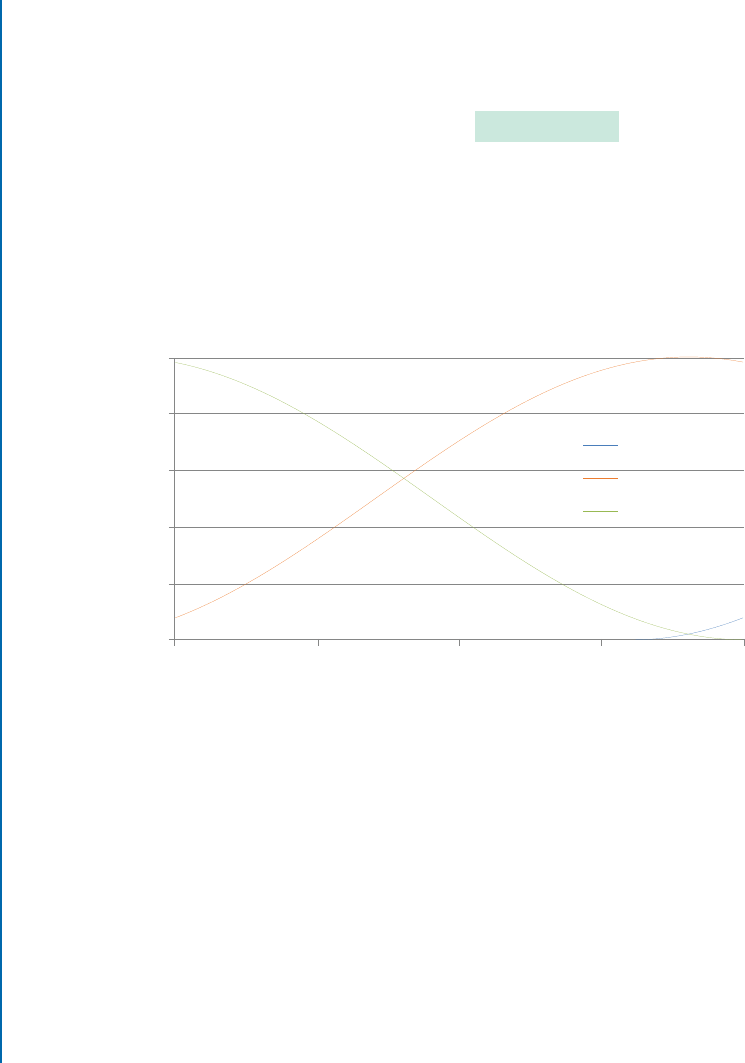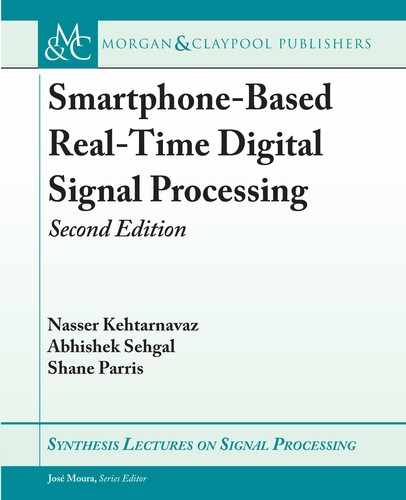
126 8. FREQUENCY DOMAIN TRANSFORMS
8.5.2 OVERLAP-ADD RECONSTRUCTION
An overlap-add reconstruction is necessary when overlap processing is performed. Once the
inverse Fourier transform is computed, this reconstruction involves adding together appro-
priate sections or segments of the signal. Continuing with the example stated earlier, i.e.,
x.n/ D u.n/ u.n 221/, and the analysis window Hanning(485) , the segments of the win-
dowing function are overlaid according to the overlap-add frame size of 221 samples, shown in
Figure 8.5, with the summation result shown in Figure 8.6. It can easily be seen that the ampli-
tude of the result is not unity but has a periodic modulation with the period being equal to the
frame size of 221 samples. us, if uncorrected, the output signal would be amplitude modulated
with the fundamental frequency of f
m
D f
s
=m, where m is the frame size. is modulation can
be removed by modulating the output signal of the overlap-add reconstruction with the inverse
signal, shown in Figure 8.7. e final result will be an output signal with the correct amplitude.
1.0
0.8
0.6
0.4
0.2
0.0
Signal Amplitude
0 55 110 165 220
ird Iteration
Second Iteration
First Iteration
Figure 8.5: Overlap-add of analysis window.
8.6 REFERENCES
[1] TI Application Report SPRA291. http://www.ti.com/lit/an/spra291/spra291.pdf
118, 119, 121
L8 LAB 8:
FREQUENCY DOMAIN TRANSFORMS–DFT AND FFT
In this lab, the C implementations of DFT and FFT are considered.
In the previous filtering labs, although audio data samples were passed in frames (in order
to accommodate the requirements of the audio APIs), the actual filtering operation was done on

L8. LAB 8: FREQUENCY DOMAIN TRANSFORMS–DFT AND FFT 127
1.2
1.0
0.8
0.6
0.4
0.2
0.0
0 55 110 165 220
Figure 8.6: Analysis window summation.
1.0
0.8
0.6
0.4
0.2
0.0
0 55 110 165 220
Figure 8.7: Synthesis window.
a sample by sample basis using linear convolution. However, in performing DFT (or FFT), the
transform requires access to a window of audio data samples which may or may not contain more
than one frame of data. is is referred to as frame processing. In frame processing, N samples
need to be captured first and then operations are applied to all N samples with the computation
time measured in terms of the duration of a frame.
e application shell for this lab resembles that of the previous labs. e code basically
follows the same initialization, computation, and finalization methods covered in the previous
labs. e DFT and FFT implementations, given in Chapter 8, appear in the file Transforms.c. In
addition, an audio spectrogram application is provided for the Android and iOS targets by taking
into consideration the concepts discussed in the chapter. is app features graphical display of
..................Content has been hidden....................
You can't read the all page of ebook, please click here login for view all page.
